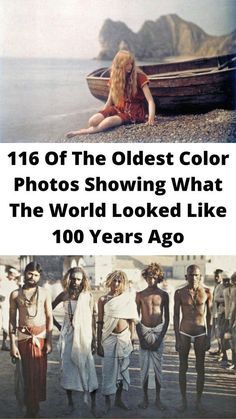The History of Color Photography
Contrary to popular belief, color photography has been around for much longer than many people realize. In fact, the first successful color photograph was taken in 1861 by a Scottish physicist named James Clerk Maxwell. This early technique involved taking three separate black and white photographs through red, green, and blue filters and then projecting them onto a screen with three different projectors equipped with the same filters. This created a full-color image that was ahead of its time.
Early Color Processes
In the late 19th and early 20th centuries, several different color photography processes were developed. One of the most notable was the Autochrome process, which was patented in 1903 by the Lumière brothers in France. This process involved using dyed grains of potato starch as a color filter over a black and white emulsion. When the photo was taken, the starch grains would act as tiny color filters, creating a color image.
Stunning Vintage Photos in Color
Despite the prevalence of black and white photos from this era, there are some stunning examples of color photographs from the turn of the 20th century. One such example is a photo of a young Russian woman taken in 1909 by Sergey Prokudin-Gorsky. Prokudin-Gorsky was a pioneer of color photography, and his work documented the Russian Empire in full color. Another remarkable example is a set of color photos taken by French banker Albert Kahn, who sent photographers around the world to document various cultures in color.
The Advent of Modern Color Film
While early color photography processes were impressive, they were often complex and time-consuming. It wasn’t until the 1930s that modern color film became widely available. Kodachrome film, introduced by Kodak in 1935, was one of the first commercially successful color films. This revolutionary film made color photography more accessible to amateur photographers and paved the way for the vibrant color photography we see today.
Impact on Historical Preservation
The availability of color photography has had a significant impact on historical preservation. While black and white photos offer a timeless quality, color photos provide a more immersive and detailed glimpse into the past. Color photographs from the early 20th century allow us to see the world as it truly was, with all the vibrancy and richness of life that black and white photos can sometimes obscure.
Summary List:
– The first successful color photograph was taken in 1861 by James Clerk Maxwell, a Scottish physicist, using a complex process involving red, green, and blue filters.
– The Autochrome process, patented in 1903 by the Lumière brothers, used dyed grains of potato starch as color filters to create color photographs.
– Sergey Prokudin-Gorsky and Albert Kahn were pioneers of color photography, capturing stunning images in full color at the turn of the 20th century.
– Kodachrome film, introduced by Kodak in 1935, was one of the first commercially successful color films, making color photography more accessible.
Conclusion
Color photography has a rich and fascinating history that predates many people’s assumptions about the technology. From early experimental techniques to the advent of modern color film, the evolution of color photography has had a profound impact on historical preservation and our ability to perceive the past in all its vibrancy. As we continue to advance in technology, it’s important to remember and appreciate the pioneers who paved the way for the stunning color photography we enjoy today.
You can review our digital products by following us on Etsy.





